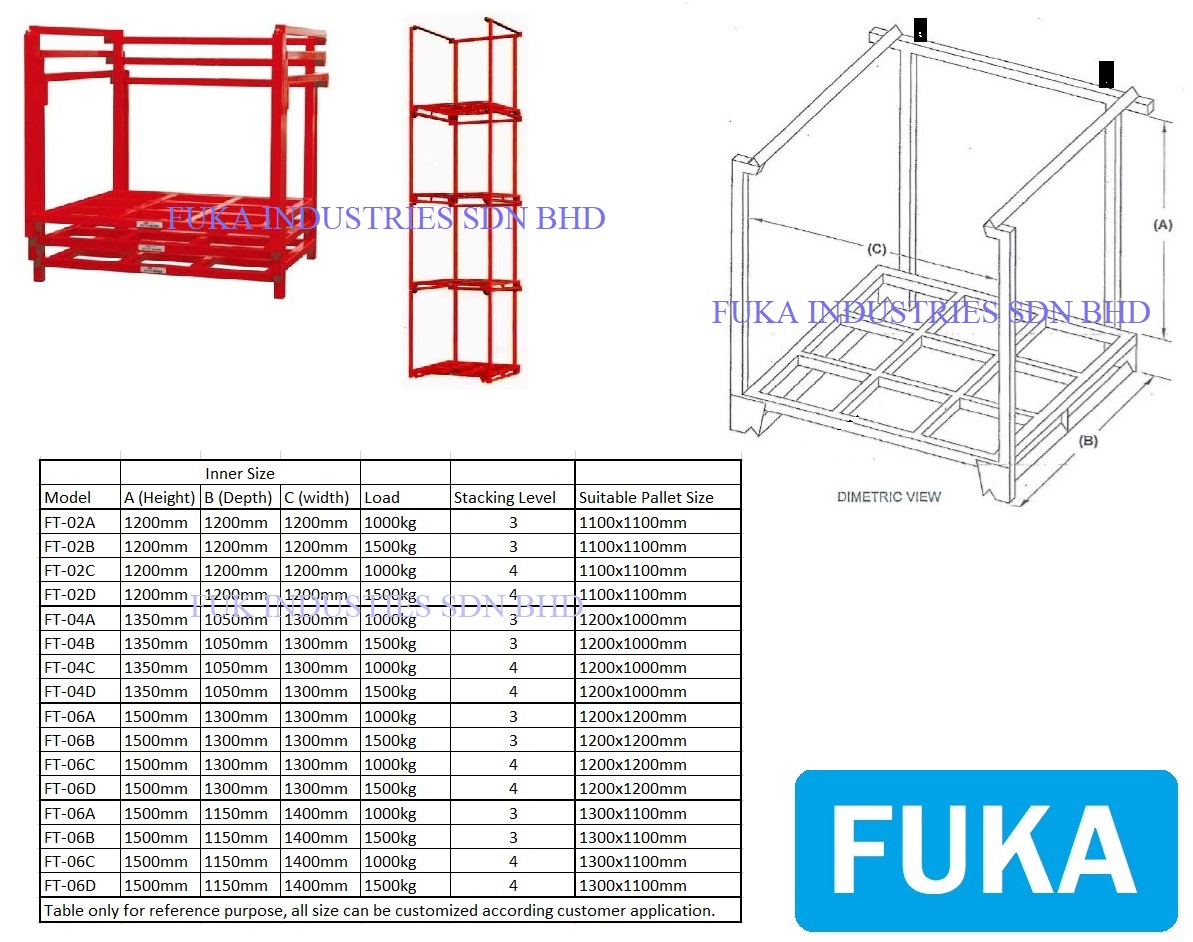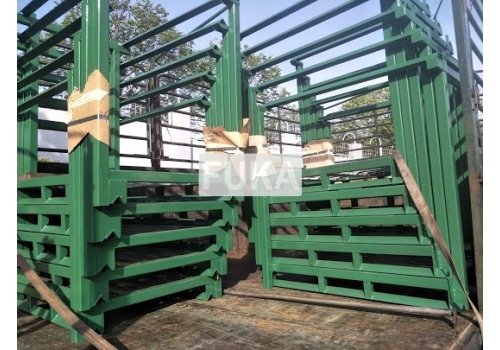
Product
Pallet Tainer
**Free onsite measurement and advice.
**Price quoted including professional advice.
Please call/SMS/whatsapp
*******Free Quotation*******
017-641 2290
Pallet Tainer
Pallet Tainer / Stackable Steel Pallet
Dimension: custom make into any size
Load: custom make into any load
Material: mild steel / galvanised steel
Please call for Enquiry 017-641 2290

A stackable pallet cage, also known as a pallet tainer or stacking rack, is a heavy-duty, portable storage and material-handling solution designed to optimize warehouse space and improve logistics efficiency. Built from robust steel frames, these units can be stacked vertically when loaded or nested when empty, making them both space-efficient and cost-effective. They are widely used in industries that need safe, organized, and flexible storage for goods, especially bulky or irregularly shaped items.
Design and Features
A pallet tainer is essentially a steel pallet frame with four upright posts that allow vertical stacking. Some designs have mesh or solid side panels (making them a “cage”) to secure goods, while others have open sides for easier loading. The base is typically made from steel, plywood, or mesh, depending on load requirements.
Key Features:
-
Stackable Design: Multiple pallet tainers can be stacked 3–5 units high when loaded, maximizing vertical storage.
-
Collapsible or Nestable: When empty, units can be nested or folded to save floor space.
-
Durable Construction: Made from powder-coated steel to withstand heavy loads and resist corrosion.
-
Customizable Base: Options include steel slats, mesh, or wooden/plywood boards for supporting various products.
-
Forklift-Compatible: Fork pockets or open-frame bases make them easy to move with forklifts or pallet trucks.
Applications of Stackable Pallet Cages / Pallet Tainers
1. Warehousing and Distribution
In warehouses, pallet tainers act as mobile racks that allow goods to be stacked vertically without permanent racking systems. This is ideal for businesses with seasonal inventory changes, as storage layouts can be adjusted easily. Pallet tainers are often used for:
-
Cartons and boxes
-
Bulk materials
-
Heavy machine parts
-
Tires and automotive components
Example: A spare parts warehouse might stack three pallet tainers of engine components on top of each other, reducing floor usage while keeping goods organized and accessible.
2. Manufacturing and Production Lines
Manufacturing plants use pallet tainers to store raw materials, semi-finished products, or finished goods. Their sturdy structure keeps materials safe, while the mobility allows for quick transportation between production stages.
Example: In a furniture factory, pallet tainers with plywood bases store wooden panels, while mesh-sided units hold smaller fittings and accessories.
3. Retail and Bulk Goods Storage
Large retailers, supermarkets, and wholesale stores use pallet tainers for backroom storage. They are particularly useful for seasonal goods or promotional stock that needs to be stored securely but also moved easily to the sales floor.
Example: A supermarket may keep pallet tainers of bottled drinks stacked in the storage area, ready to replenish shelves during high-demand periods.
4. Automotive Industry
The automotive sector uses pallet tainers to handle heavy and bulky items like tires, rims, body panels, and engine components. The stackable nature helps organize parts for easy retrieval while keeping them safe from damage.
Example: A tire distributor stores different tire sizes in separate pallet tainers, stacked to maximize floor space while maintaining easy forklift access.
5. Agriculture and Food Processing
Pallet cages are suitable for bulk storage of agricultural produce such as onions, potatoes, or packaged food products. Mesh or cage sides ensure ventilation while preventing items from falling out.
Example: A fruit packing facility uses mesh-sided pallet tainers to store and transport large volumes of apples between sorting and packaging areas.
6. Construction and Heavy Industry
Construction companies use pallet tainers to store and transport heavy tools, steel rods, fittings, and prefabricated parts. The robust design can handle rough conditions and protect goods from damage.
Example: On a construction site, pallet tainers are stacked with metal pipes and fittings, ensuring materials remain organized and off the ground.
Benefits of Using Stackable Pallet Cages
1. Space Optimization
Vertical stacking reduces floor usage by allowing warehouses to store more goods in the same footprint. When empty, nesting or folding the units saves up to 75% of storage space.
2. Flexibility
Unlike fixed racking systems, pallet tainers can be moved and rearranged to suit changing storage needs. This is particularly valuable for businesses with seasonal demand.
3. Durability and Load Capacity
Made from high-strength steel, pallet tainers can support heavy loads—often exceeding 1,000 kg per unit—without bending or warping.
4. Safety
Goods are protected from crushing or tipping, and the stable stack design minimizes the risk of accidents. Side panels or cages prevent items from falling.
5. Easy Handling
Forklift and pallet truck compatibility makes moving goods quick and efficient, reducing manual handling and labor time.
6. Versatility
They can store almost any type of goods—from boxed products to loose items—making them suitable across multiple industries.
How to Use Stackable Pallet Cages Effectively
-
Loading: Place goods evenly on the base to maintain balance. Avoid overloading beyond the rated capacity.
-
Stacking: Align units properly before stacking. Use the built-in corner guides to ensure stability.
-
Transporting: Always use forklifts or pallet trucks from designated entry points to prevent damage.
-
Storing Empty Units: Nest or fold them to save warehouse space when not in use.
-
Maintenance: Check regularly for rust, bent frames, or damaged bases, and repaint or repair as needed.

